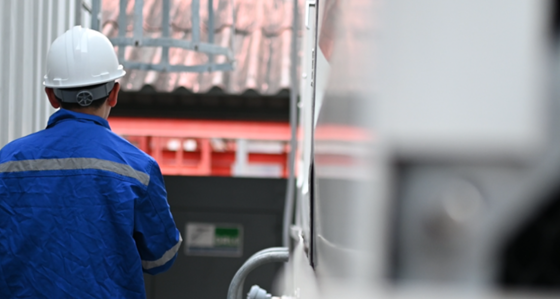
The report: Europe's battery profitability
The importance of selecting the right market, duration, and getting the timing right
Executive Summary
Battery pipelines across Europe are swelling. But as developers, investors and lenders ask whether those pipelines translate to profitable opportunities, our answer is: "only in the right markets, at the right durations and at the right time."
Drawing on our extensive Flexibility Market Report coverage across 19 European markets, we compare Internal Rates of Return (IRRs) for 2-hour and 4-hour batteries commissioned in 2026, 2030 and 2035. While capacity mechanisms help boost returns in many markets, duration, timing, cost structures and evolving market conditions play a critical role in determining investment viability.
The results highlight:
- Capacity remuneration mechanisms matter
- 2-hour batteries win now (projects with a 2026 commercial operation date)
- 4-hour batteries will overtake in several markets by 2030 and 2035
- There is a great European growth story
- The IRR ranking changes over time: today's winners aren't necessarily tomorrow's
- Project costs matter: the market with the highest average gross margins isn’t always the one with the highest IRR
- Profitability isn’t everything: market attractiveness goes beyond IRR
Flexibility is a European story
From Austria to Sweden, the European flexibility market is no longer a niche corner of the energy sector. Energy storage (from batteries and other technologies), thermal power generation, demand response and interconnectors are stepping in to stabilise an increasingly renewables-heavy grid and enable delivery of Net Zero by 2050.
The following insights derive from our H1 2025 European Flexibility Market Reports and the associated projections distributed to subscribers in June 2025 across the following markets:
Austria, Belgium, Bulgaria, Croatia, Finland, France, Germany, Denmark, Great Britain, Greece, Hungary, Italy, Netherlands, Poland, Portugal, Romania, Serbia, I-SEM (Integrated Single Electricity Market on the Island of Ireland) and Sweden. Contact us to find out more and subscribe to these reports.
IRRs: Where Are the Profitable Plays?
To help developers, investors and lenders cut through the noise, we modelled real, unlevered, pre-tax IRRs for 2-hour and 4-hour battery systems, under the Baringa Reference Case and hybrid contracting strategy across European markets for CODs in 2026, 2030 and 2035.
We find that:
2-hour batteries win now (projects with a 2026 commercial operation date):
- 2-hour batteries dominate due to better capital efficiency and a high share of value from short-duration services.
- Batteries in markets with a capacity mechanism tend to be towards the top of the ranking, although Germany is the exception without a capacity mechanism, and features relatively high in our IRR ranking. The reason for Germany’s strong performance lies in the value batteries can derive from its intra-day market.
- 4-hour batteries will overtake in several markets by 2030 and 2035: reflecting growing arbitrage and longer-duration flexibility value as well as declining CAPEX.
There is a great European growth story. Unusually, several markets are currently seeing better returns than in Great Britain. It should also be noted from the charts above that there are several market and duration combinations which produce higher IRRs than those seen for the GB 2-hour battery (especially in the 2026 COD chart). This is signals a great European growth story as GB is the leading battery storage market in Europe with approx. 5.5 GW operational as of June 2025; however, while GB remains investable, higher returns are achievable in several European markets.
The IRR ranking changes over time: today's winners aren't necessarily tomorrow's. Market conditions shift IRRs dramatically. Some markets decline (due to saturation or falling ancillary services availability value), while others improve with clearer price signals and reforms.
Project costs matter: the market with the highest average gross margins isn’t always the one with the highest IRR.
- IRRs swing with costs: CAPEX and transmission and distribution fixed costs vary significantly by market and can influence IRR rankings.
- The CAPEX gap: there is approximately a 20% difference in CAPEX between the most and least expensive markets in this study.
True market attractiveness goes far beyond simple profitability. While IRR is only a piece of the puzzle, our upcoming Batteries Energy Storage Market Scanning Report (Summer 2025) offers a more complete picture. This global study rigorously assesses markets across five additional crucial criteria: capacity growth, market liquidity, policy environment, ease of development, and macro risks. This allows us to deliver a holistic market ranking.
For a market entry strategy tailored to your unique business objectives, partner with our bespoke client advisory team.
Our Modelling Approach
Our battery IRR analysis is powered by our proprietary Battery Asset Model, which simulates performance across:
- DA, ID, Balancing, and Ancillary services
- Degradation and cycling strategies
- Price forecasts under Baringa market scenarios
- Contracting strategies (wholesale arbitrage and hybrid)
Upstream of this sits our Integrated Market Modelling Framework, which produces:
- National and zonal price projections
- Generation schedules
- Ancillary service availability and prices
- Emissions
This isn’t just insight. It’s market advantage.
The value of flexibility evolves continuously, shaped by commodity prices, regulation, and technology shifts. Subscribers to our European Flexibility Market Reports don’t just get projections, they gain:
- Biannually updated gross margin projections
- Market reform and policy tracking
- CAPEX, Annuitized Costs and IRR projections
- Direct access to our flexibility experts
- Full-length Insight pieces like this one
Want the full picture? Find out more about our Market Reports
Let's make Europe's flexibility opportunity work for you.
"I’m incredibly proud of what we’ve delivered in H1 2025 - covering so many European power markets and giving our subscribers actionable, data-driven insights. Our European Flexibility Market Reports give clients a robust foundation to enter any flexibility market, accurately mark-to-market existing portfolios, and make confident investment or divestment decisions - whether in equity or debt. Behind the scenes, our talented team is constantly refining our market and asset modelling, evolving our methodologies, and listening closely to client feedback. That’s why I’m confident this product will only keep getting better. If you are not already a subscriber, you should join us!"
Samuel Ebohon


Flexibility Market Reports - Bankable, reliable projections
Equipping you with the insight you need to make informed and timely decisions about investing in energy flexibility technologies. Subscribe to our Flexibility Market Reports for a holistic view of the market, with a focus on energy storage.
Read more
Money still backs batteries in Great Britain
Read this article for an exploration of why GB remains an attractive battery storage market – not just on a spreadsheet, but in substance, for those looking to build, acquire, or finance BESS.
Read more